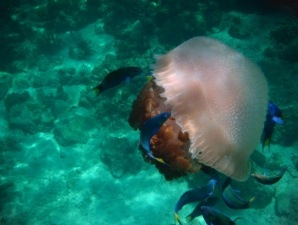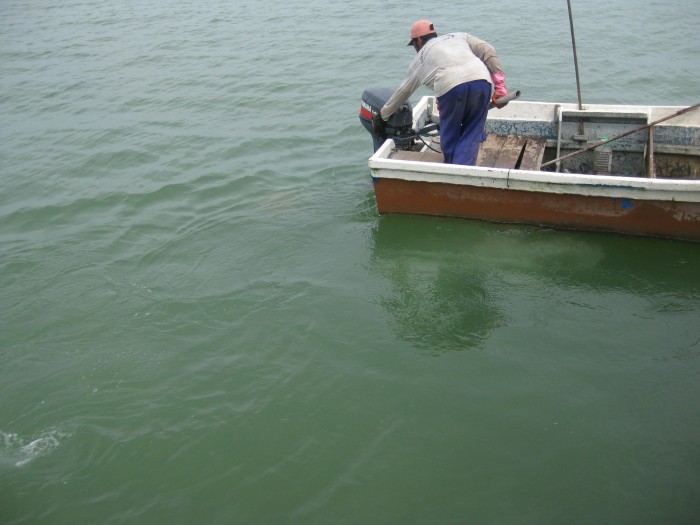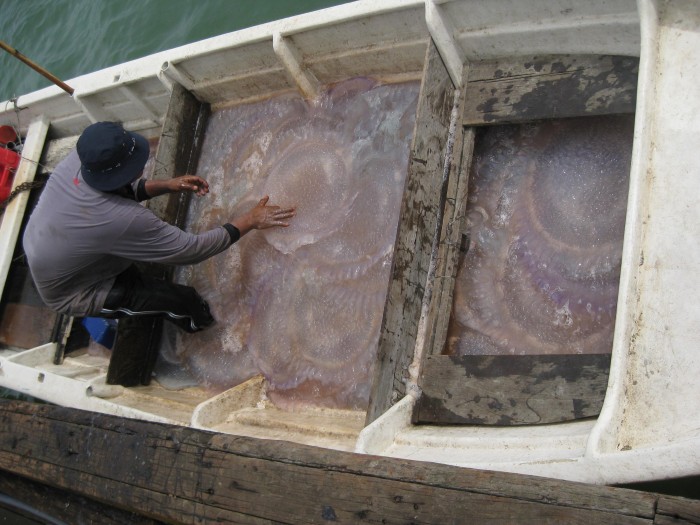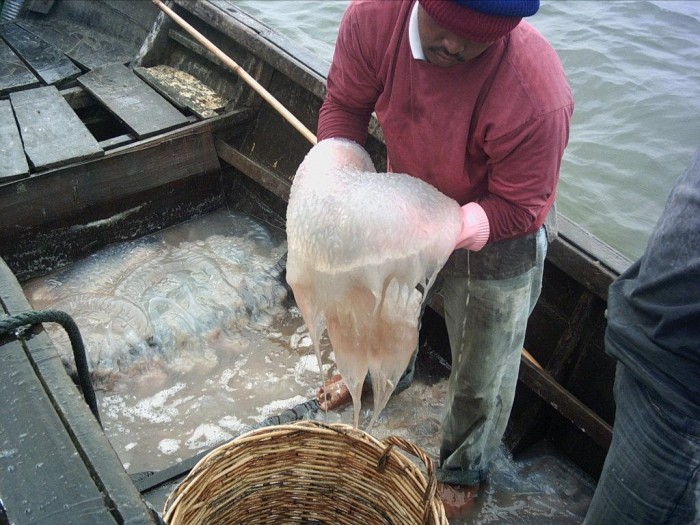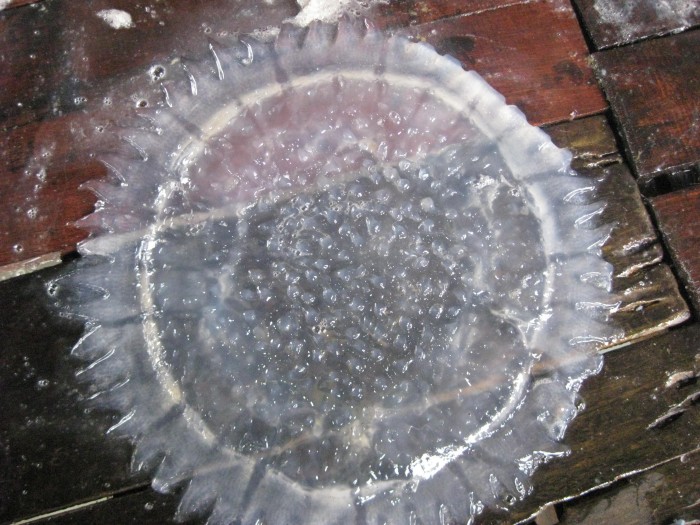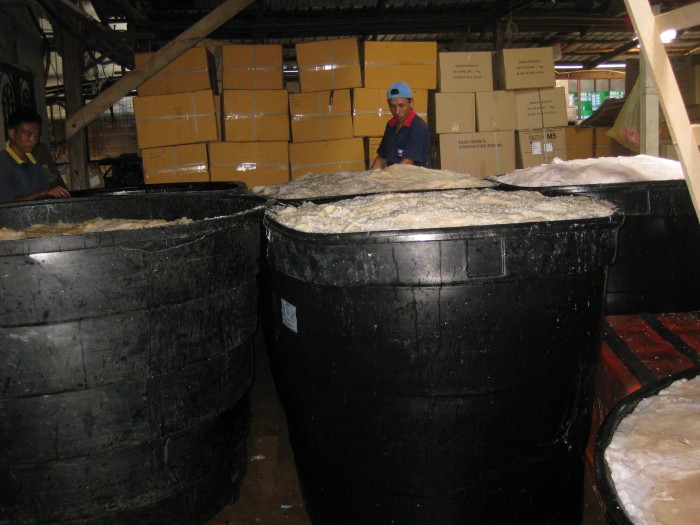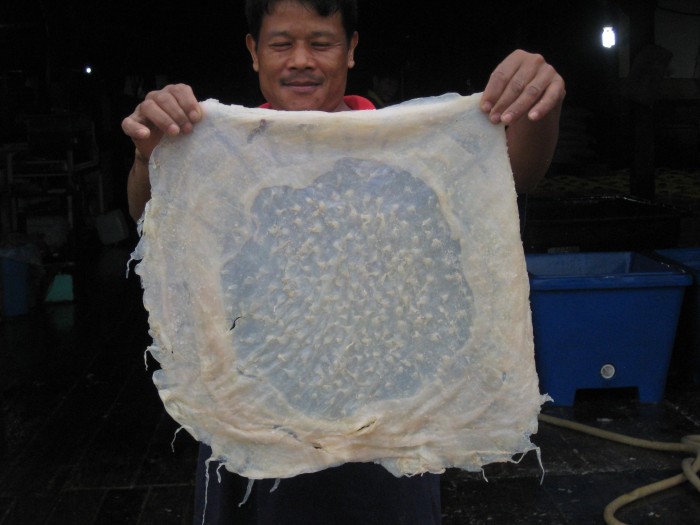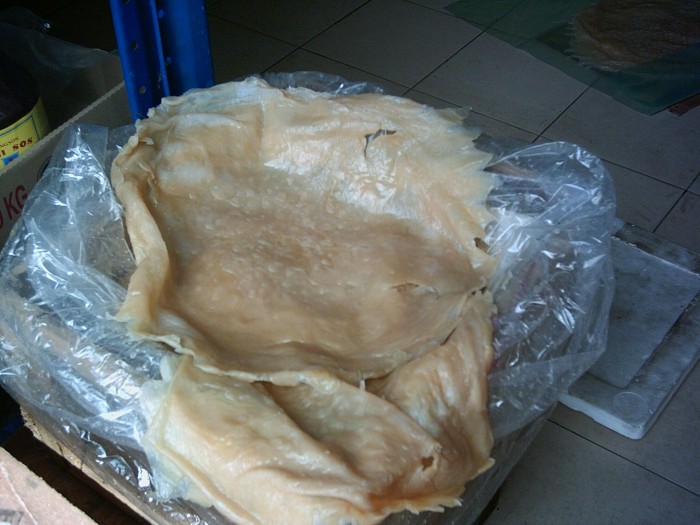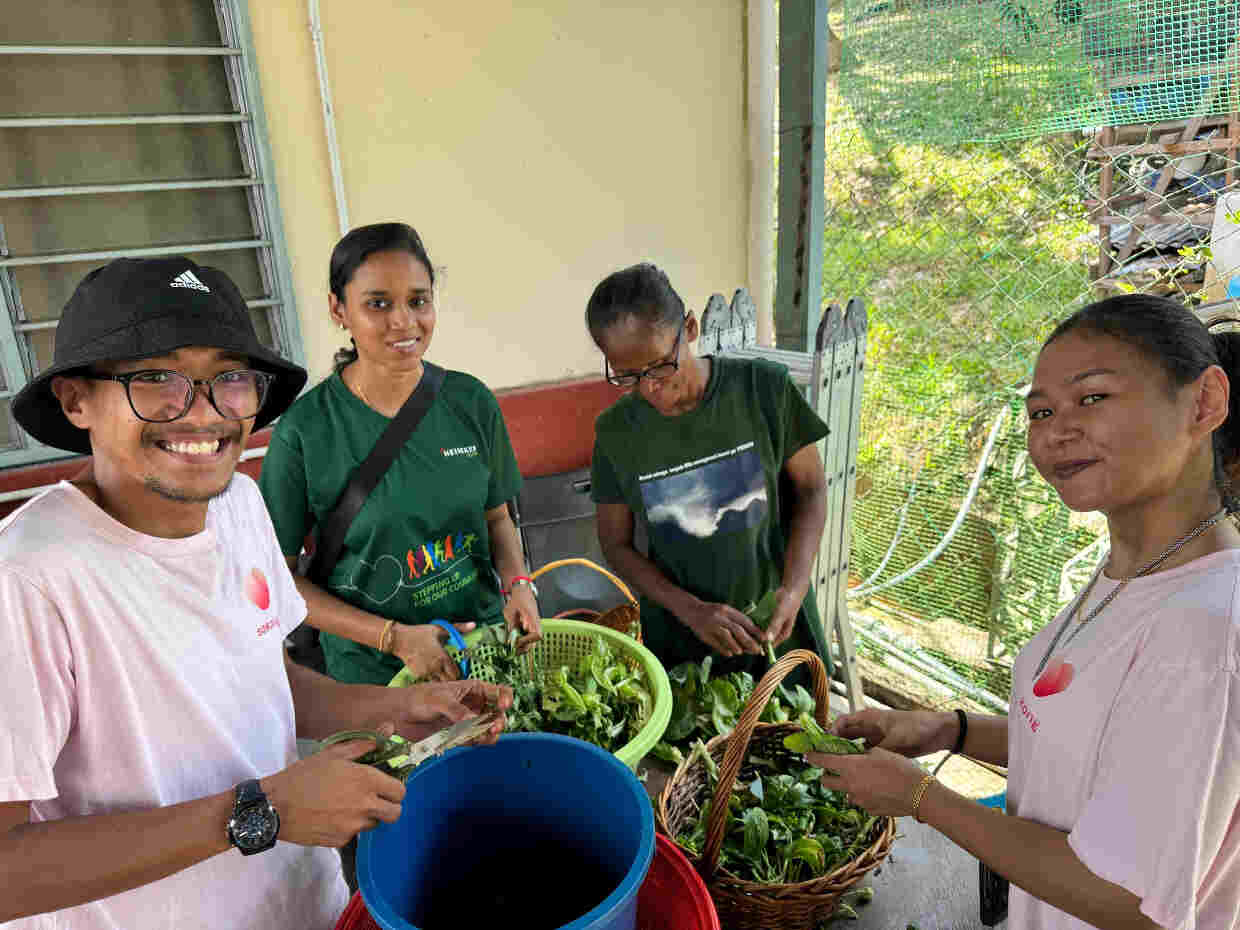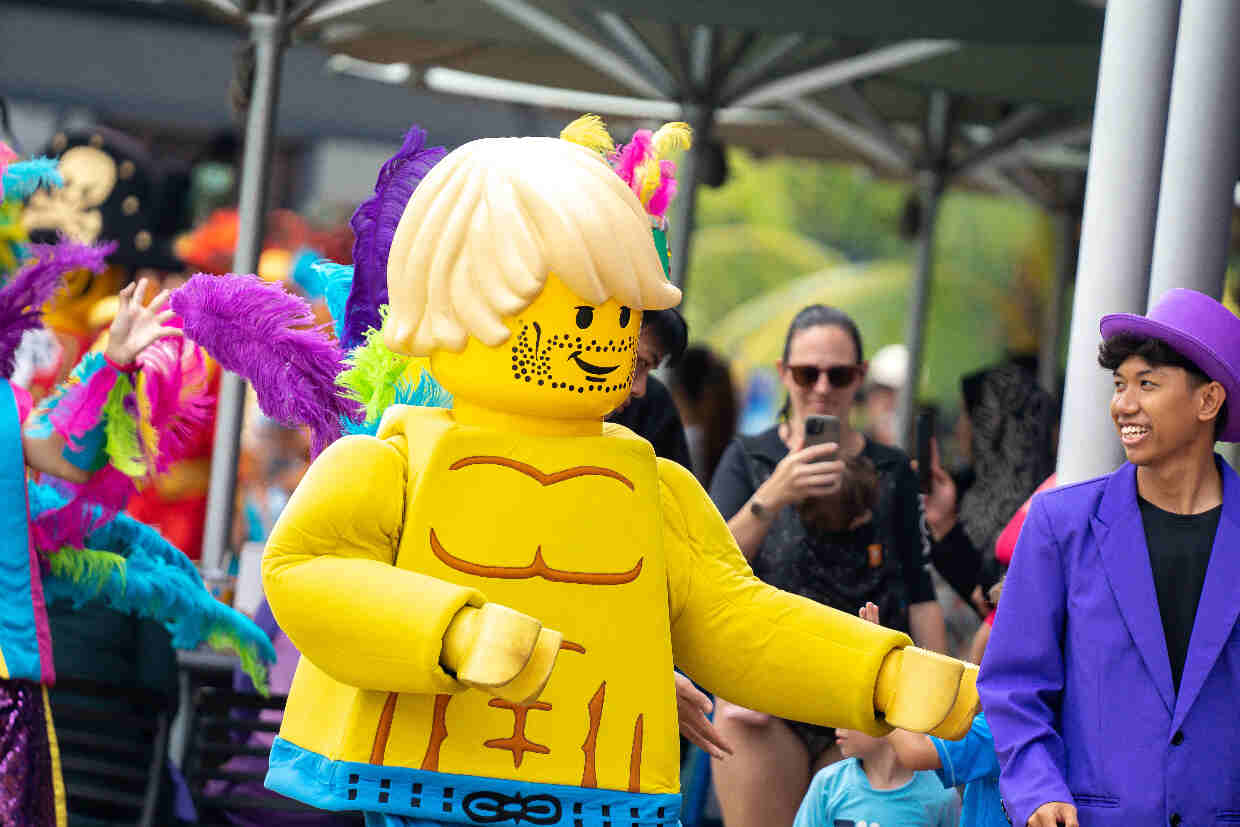Jellyfish, the edible variety, have landed in Pangkor.
Until last month in Peninsular Malaysia, there had been no jelly fish landings since 2008.
Though not substantial compared to the landing in 1998, this year’s in Pangkor is comparatively large.
This unusual phenomenon is irregular and depends on nature.
They usually occur around August/September each year or the 7th or 8th moon, according to the lunar calendar.
Landings seem to occur once every ten years.
There are no fixed season each year for jelly fish to appear and the phenomenon varies from year to year and from place to place.
These jellyfish are not one of the box varieties that sting you when you are swimming off Desaru, Samui or Fiji.
Over 2000 species of jellyfish have been identified although only eight are edible. The jellyfish is not a fish, it is a sea jelly.
The places where great numbers of jellyfish occur are characterised by having a large tidal range, shallow depth, semi enclosed water mass, freshwater inflow through river systems and development of mangrove swamps.
In Thailand and Malaysia, fishermen say that jellyfish catch has decreased after extensive coastal development and cutting of mangrove trees.
The Jellyfish business
Citizen Journalists Malaysia (CJMY) interviewed T H Tan of Pangkor whose family has been in the business for the past 40 years.
Tan does not consider the jellyfish an endangered species because it does not originate from our shores and the catch lasts only 2 to 3 months.
“Fishermen do not depend solely on catching of jellyfish for their livelihood.
He continued,” Nobody can predict when the next landing is. It is considered a bonus catch as the fishermen’s main catch are prawns, fish, clams and the likes.”
There are three species of jellyfish caught in the Lekir/Pangkor sea; the sand type, the red type and white type.
Usually the sand type is sighted first followed by the white type which is commonly caught here.
Fishermen do not catch the sand type because they are slightly poisonous.
However, the Koreans relish this species. The season for sand type is very short compared to the other types.
The red species which are smaller in size but fetch more, are not usually found in the Lekir or Pangkor sea but are available when there is heavy rain along the Perak River which pushes the jellyfish into the Straits of Malacca.
This species is considered semi fresh water species. They are available mainly in the Perak River and the Bernam River.
Tan continued to explain that when the jellyfish cycle arrives it is available in big quantities in the sea.
He laments that nowadays, production is reduced due to the reduced number of fishermen.
There are fewer fishermen now as these traditional fishermen are old and have either retired or passed away.
Few young people now want to stay in the fishing village and hence the reduction of catching.
Many methods are used to catch jelly fish but here, fishermen use a hook tied to a stick as shown in the videos and sometimes, a scoop.
When the tide or current is slow between the tides, the jellyfish starts to float on the surface and the fishermen just catch them with the hook or scoop.
The process of salting
The jellyfish collected by Tan’s cargo boats are salted in his factory.
Then they remove the tentacles or head and just take the body or umbrella portion for curing. For the first and second processes they are actually salted by a mixture of salt and alum in big containers.
The jelly fish is cleaned after each stage of processing.
The product sold in the market has been processed but it is still necessary to remove the salt before consumption. The total time for curing is 14 days.
Each jelly fish which weighs between 2-10 kg may be reduced to 200-800 gm after curing in a process that takes 14 days.
Usually before selling, the vendors have to dehydrate a little before packing in boxes or plastic pails.
Tan’s family learnt how to process and export the salted jelly fish from an exporter from Penang who was selling to some Japanese buyers.
In the 1960’s, when Tan’s family started processing and exporting the jellyfish, they sold only to the Japanese and Koreans.
Now, he has also penetrated the Chinese, Hong Kong and Korean markets.
In these countries, they are relished as a delicacy in China, Japan, Malaysia, Korea and Thailand.
They have no flavour of their own but made delectable by adding sauces and spices. Shredded jelly fish is served at Chinese dinners as a cold dish and dried jelly fish in Japanese sushi.
Edible Jellyfish
Of the eight types of edible jellyfish, the sand and cannonball jellyfish are the most popular.
Although jellyfish are 95% water, they are nutritious with maximum protein content.
They do not contain cholesterol, carbohydrate and saturated fat content makes them popular weight loss food choices.
According to Tan most locals only know how to consume the jelly fish when served as an item of the cold dish at dinner tables.
However, the Foochows in Sitiawan and Sibu consume it in its raw form ie with chilli, soya sauce and lime juice to the slightly blanched jelly fish strips.
Salted white type jellyfish produced in around Pangkor Island are bigger in size and thickness. The size is measured in terms of the diameter.
There are also jellyfish from other South East Asian countries such as Indonesia, Thailand, Philippines and Myanmar but they are much smaller in size and thickness even though they are in bigger quantity and cheaper in price.
According to one of Tan’s Japanese buyers, the quality (in terms of size and thickness and colour) of the jelly fish from Pangkor Island and Kuching are considered to be of the highest grade.
The benefits of Jellyfish consumption
In China, the Chinese have eaten jelly fish for almost two thousand years.
They are apparently good for medicinal purpose such as curing high blood pressure and bronchitis.
According to the Japanese, jellyfish is good for the complexion and good for health in terms of the rare proteins and collagen it contains.
It is also considered as a high class delicacy like bird’s nest, sharks fins even though the price is much cheaper.
Annually, Japan imports 10,000 tonnes of jelly fish valued at USD 26 million.
Salted jellyfish have also developed a market in Thailand where they add it to one of the dish called “kerabu”.
Thailand is one of the main producing countries of salted jellyfish.
Its commercial value
According to FAO statistics, the world’s production totals more than 300,000 tonnes net weight. The commercial value of jelly fish exported to Japan is USD 30 million.
Recently, the Chinese market for salted jellyfish has grown to overtake the Japanese and Korean in terms of quantity.
These are the areas in Malaysia that have jelly fish:
Matu (Sarawak)
Kahong, Kuching & Sematan (South China Sea)
Ioph and Kuala Lumpur (Strait of Malacca)
Penang, Pangkor and Telok Anson (Strait of Malacca)
Catching by fishermen at sea is during the slow tide when the sea water is still and the jellyfish float to the surface.
Usually they do it within one to two hours. A fisherman can catch from 50 to about 400 pieces within the 2 hours.
According to Tan, the profit margin depends on the price which depends on (1) the international market and (2) the total quantity of landing in the South East Asian countries.
A tonne can fetch USD 3,000 and the price can drop to USD 2,000 or even USD 1,400.
The processed jelly fish price also depends on how tender it is, how elastic, crunchy, crispy and colour. The whiter the jelly fish, the more money it fetches.
The jelly fish fishery has considerable fluctuations in catch and the fishery season lasts only a few months each year.
There is thus an urgent need for further biological study of the jelly fish so that the fluctuation can be understood.
In spite of its importance as a fishery commodity, almost nothing is known of the biology and ecology of the jellyfish.


